Contents
- The Comprehensive Convention on International Terrorism (CCIT)
- Pandit Deendayal Upadhyaya Ji
- Agricultural and Processed Food Products Export Development Authority (APEDA)
- Unified Mobile Application for New-age Governance (UMANG)
- World Fisheries Day
- Dekho Apna Desh Webinar Series
THE COMPREHENSIVE CONVENTION ON INTERNATIONAL TERRORISM (CCIT)
Focus: GS 3;Security challenges and their management in border areas – linkages of organized crime with terrorism.
Why in News?
Vice President calls upon the world community to come together to isolate nations that sponsor terrorism
About The Comprehensive Convention on International Terrorism (CCIT)
- In 1996, with the objective of providing a comprehensible legal framework to counter terrorism, India proposed to the United Nations General Assembly (UNGA) the adoption of the “Comprehensive Convention on International Terrorism” (CCIT).
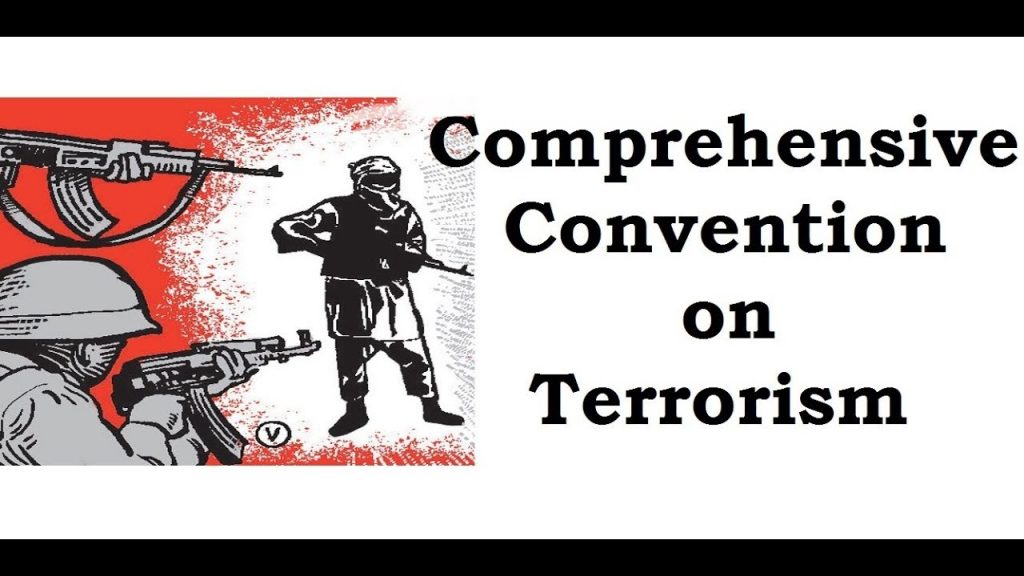
- The India, which has been a victim of cross-border terrorism, took cognizance of the threat it poses to international peace and security long before the major world powers.
- The CCIT will provide legal framework which will make it binding on all signatories to deny funds and safe havens to terrorist groups, the original draft that was tabled in 1996 and discussed until April 2013.
Major Objectives of CCIT
- To have a universal definition of terrorism that all 193-members of the UNGA will adopt into their own criminal law.
- To ban all terror groups and shut down terror camps.
- To prosecute all terrorists under special laws.
- To make cross-border terrorism an extraditable offense worldwide.

Above image attached explains the CCIT and its basic Concerns.
About definition of terrorism
- According to this convention, Any person who commits an offense, with the purpose of the conduct is to intimidate a population or to compel a Government or an international organization to do or abstain from doing any act, which causes:
- Death or serious bodily injury to any person; or
- Serious damage to public or private property, including a place of public use, a State or government facility, a public transportation system, an infrastructure facility or the environment; or
- Damage to property, places, facilities, or systems resulting in or likely to result in a major economic loss.
About the Global Impact of Terrorism
- There was no change in the five countries most impacted by terrorism, which include Iraq, Afghanistan, Nigeria, Syria and Pakistan. All of these countries have been ranked in the worst five every year since 2013.
- The Conflict continued to be the primary driver of terrorist activity for the countries most impacted by terrorism in 2017.
- In 2017, terrorist attacks in conflict countries averaged 2.4 deaths, compared to 0.84 deaths in non-conflict countries. Terrorist attacks are more lethal on average in countries with a greater intensity of conflict. In 2017, countries in a state of war averaged 2.97 deaths per attack, compared to 1.36 in countries involved in a minor armed conflict.
- There are numerous possible reasons for this difference, countries in conflict have a greater availability of more military-grade small arms and bomb-making capabilities.
- Countries that are not in conflict tend to be more economically-developed and spend more on intelligence gathering, policing and counterterrorism.
About the concerns expressed by various countries regarding the Convention
- The US and its allies concerns over definition of terrorism, including acts by US soldiers in international interventions without UN mandate.
- The Latin American countries concerns over international humanitarian laws being ignored.
- There are also concerns that convention will be used to target Pakistan and restrict rights of self-determination groups in Palestine, Kashmir etc.
- The Organization of Islamic Countries (OIC) wants exclusion of national liberation movements, especially in the context of Israel-Palestinian conflict. It was argued that there is a need to distinguish acts of terrorism from movements for self-determination so that legitimate movements are not labeled as criminal acts of terrorism.
About PM Modi’s 10 Point Agenda to counter the Menace of Terrorism as shown in the below image

Way Forward
- To create an effective mechanism to counter terrorism it is necessary that countries should agree upon a definition of terrorism.
- The Countries should not look from the prism of their self-interest rather look into the issue through a broader perspective of solving the problem of global menace of terrorism.
Extra Info
About the Existing Laws in India to stop Terrorism
- In India has time and again formulated laws to deal with terrorism. Currently, the Unlawful Activities (prevention) Act, 1967 (UAPA) is the primary anti– terrorism law in force in India.
- The below laws are there in India to deal with Terrorism they are as follows
- The Unlawful Activities (Prevention) Act, 1967 (UAPA)
- Terrorist and Disruptive Activities (Prevention) Act, 1987 (TADA)
- The Maharashtra Control of Organised Crime Act, 1999 (MCOCA)
- Prevention of Terrorism Act, 2002
- The National Investigation Agency (NIA) a Central Agency to Deal with Terror Related Crimes. The National Investigation Agency (NIA) is a central counter-terrorism agency functioning under the Ministry of Home Affairs, Government of India.
Please click on this link and Refer detailed explanation about UAPA Act 1967
PANDIT DEENDAYAL UPADHYAY Ji
Focus: GS 1; The Freedom Struggle — its various stages and important contributors/contributions from different parts of the country.
Why in News?
PM at 8th Convocation of Pandit Deendayal Petroleum University, Gandhinagar, Gujarat
About Pandit Deendayal Upadhyaya Ji
- The Pandit Ji born in Mathura, UP in 1916, Pandit Deendayal Upadhyay is an Indian politician.
- He was one of the most important leaders of the Bharatiya Jana Sangh, the forerunner of the present day Bharatiya Janata Party.
- He qualified the civil services examination, where he got his nickname as Panditji for appearing in the examination hall wearing traditional dhoti-kurta and cap.
- He however did not join the service, but became in 1942, a life-time volunteer of the Rashtriya Swayamsevak Sangh (RSS).
- However, Upadhyaya is seen to have played a larger role in India’s thought process and political life, transcending party lines.
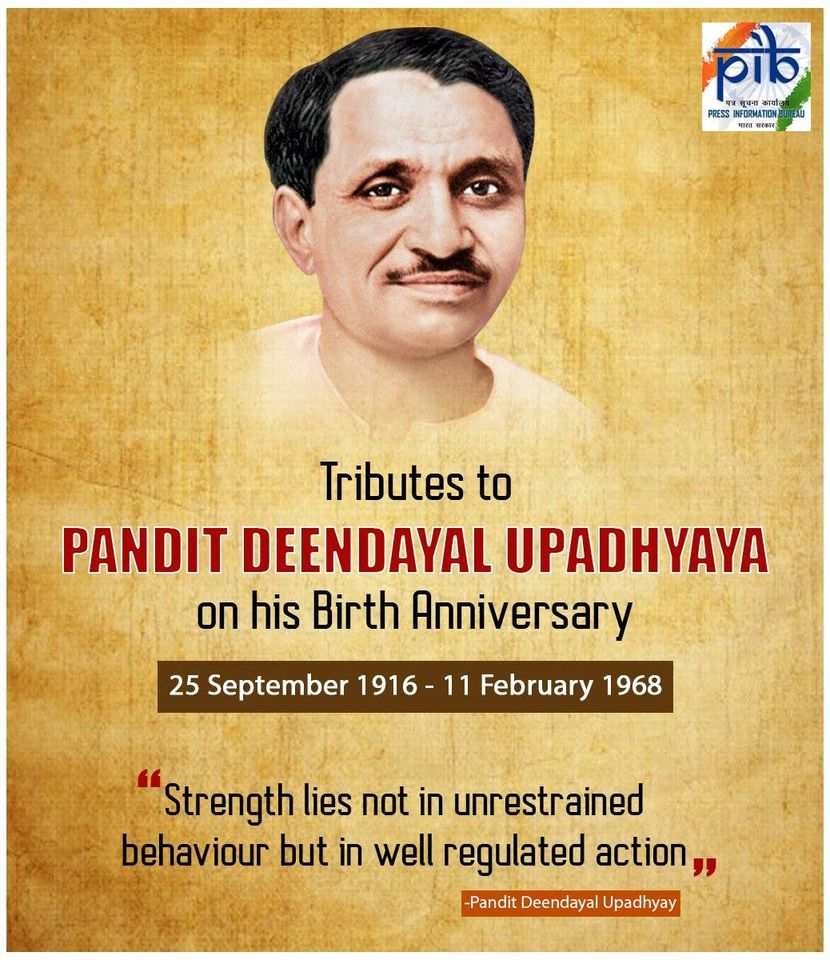
About the Ideals of Pandit Ji
- The concept of Integral Humanism he propounded envisages remedies for the post-globalization maladies of the world.
- The Upadhyaya Ji conceived a classless, casteless and conflict-free social order.
- He stressed on the ancient Indian wisdom of oneness of the human kind.
- For him, the brotherhood of a shared, common heritage was central to political activism. He emphasized on coexistence and harmony with nature.
- He conceptualized an alternative approach which was free from the dialectics of competition and envy, a third way from the inertia of Capitalism and Communism.
- He was a pioneer of many political experiments. He was the architect of the first coalition phase in Indian politics.
- The Deen Dayal Upadhyaya Ji was an advocate of less government and more governance.
- He believed in self-sustaining autonomous units, more power to states and decentralized and competitive federalism, solidly cemented on the cultural mosaic of our tradition, heritage and experience of the past.

About Major Schemes in the name of Pandit Ji
- The Deendayal Antyodaya Yojana (DAY) – integrating the NULM and NRLM for alleviating poverty.
- The Deendayal Upadhyaya Grameen Kaushalya Yojana (DDU-GKY) Antyodaya Diwas – to diversify the incomes of rural poor families and to cater to the career aspirations of rural youth.
- The Deendayal Upadhyaya Gram Jyoti Yojana – to provide electricity to rural homes.
- The Pandit Deendayal Upadhyaya Shramev Jayate Karyakram – to create a conducive environment for industrial development primarily through skill training.
- The Deendayal Upadhyaya Swaniyojan Yojana (DUSY) – the rural version of the Start Up India scheme.
AGRICULTURAL AND PROCESSED FOOD PRODUCTS EXPORT DEVELOPMENT AUTHORITY (APEDA)
Focus: GS 3; Food processing and related industries in India- scope’ and significance, location, upstream and downstream requirements, supply chain management.
Why in News?
APEDA has organised Virtual Buyer Seller Meets with potential importing Countries for product promotion of Indian agri products
About Agricultural and Processed Food Products Export Development Authority (APEDA)
- The Agricultural and Processed Food Products Export Development Authority (APEDA) was established by the Government of India under the Agricultural and Processed Food Products Export Development Authority Act passed by the Parliament in December, 1985.


- The Agricultural and Processed Food Products Export Development Authority (APEDA) is an apex body under the Ministry of Commerce and Industry, Government of India, responsible for the export promotion of agricultural products.

About Origin and Purpose of APEDA
- The APEDA was created under APEDA Act, 1985, by replacing the Processed Food Export Promotion Council (PFEPC) with additional responsibilities. Some of the functions of APEDA are as following;
- Promotion of exports of agricultural and processed food products. Promotion of export oriented production and development of the Scheduled products.
- To make Improvement in numerous areas such as packaging, marketing for the Scheduled products outside India.
- Setting standards and specifications for the scheduled products for the purpose of exports.
- Financial assistance, reliefs and subsidy to the relating industries.
- To provide training in the related areas.
UNIFIED MOBILE APPLICATION FOR NEW-AGE GOVERNANCE (UMANG)
Focus: GS 2; Important aspects of governance, transparency and accountability, e-governance applications, models, successes, limitations, and potential; citizens charters, transparency & accountability and institutional and other measures.
Why in News?
Online conference under chairmanship of Union IT Minister to be organized to mark 3 Years of UMANG
About UMANG App
- It is a unified, secure, multi-channel, multi-platform, multi-lingual, multi-service mobile app.
- It is a Digital India initiative of the Ministry of Electronics and Information Technology (MeitY) launched in 2017.
About features of UMANG App
- It provides seamless integration with popular customer centric services like Aadhaar and Digilocker.
- It provides a unified approach where one can install one application to avail multiple government services.
- It can be accessed on multiple channels like mobile application, web, and SMS which can be accessed through smartphones, tablets and desktops.
- It has a rich multimedia interface with a focus on maximizing usability and enriching user experience.
- The Services provided by the app are as follows
- It is a unified application that can be used to avail a number of pan India e-government services such as
- Filing income tax,
- Employees Provident Fund Organization (EPFO) services,
- Aadhar,
- Pension,
- e- Patashala,
- e- Land Records,
- Crop Insurance etc.

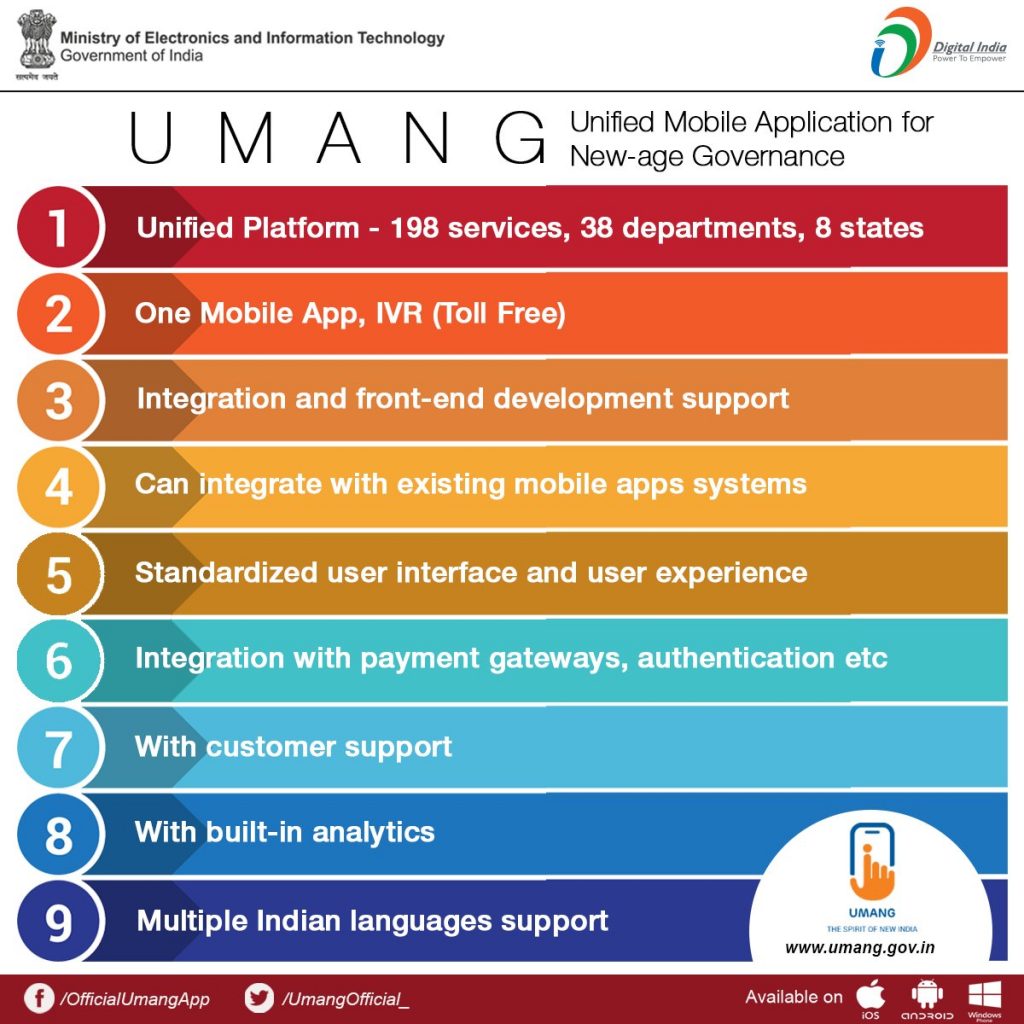
Above image of UMANG App and its features
- The below image depicts the features and services of UMANG App.

WORLD FISHERIES DAY
Focus: GS 3; Issues related to direct and indirect farm subsidies and minimum support prices; Public Distribution System- objectives, functioning, limitations, revamping; issues of buffer stocks and food security; Technology missions; economics of animal-rearing.
Why in News?
Department of Fisheries celebrates World Fisheries Day; Awards best performing States in Fisheries Sector for the first time to promote healthy competition among States
About World Fisheries Day 2020
- The World Fisheries Day is celebrated on 21 November every year throughout the world by the fisherfolk communities.
- It highlights the importance of healthy oceans ecosystems and to ensure sustainable stocks of fisheries in the world. 2020 is the fourth World Fisheries Day.
- The Indian fish market was worth INR 1,110 Billion in 2018.
- The market is further projected to reach INR 1,998 Billion by 2024, growing at a CAGR of 10.2% during 2019-2024.
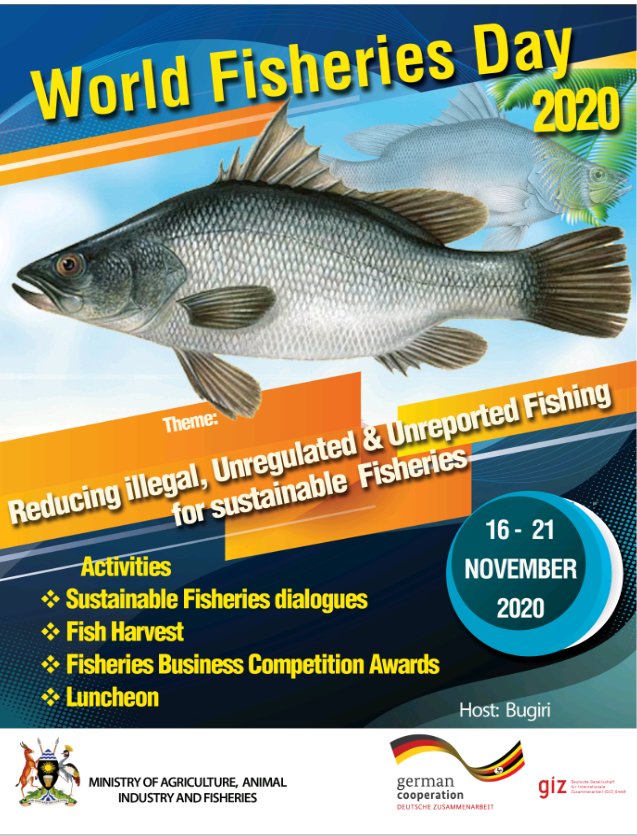
Above image of World Fisheries Day 2020 and its Theme
About Importance of Fisheries for India
- The India is the second major producer of fish through aquaculture in the world.
- The India is the 4th largest exporter of fish in the world as it contributes 7.7% to the global fish production.
- The fish constituted about 10% of total exports from India and almost 20% of agriculture exports in 2017-18.
- The fisheries and aquaculture production contribute around 1% to India’s GDP and over 5% to the agricultural GDP.
- Around 28 million people are employed in the fisheries sector in India.
- The sector has immense potential to more than double the fishers and fish farmers’ incomes, as envisioned by the government.
About Indian Government’s Effort to Improve Fisheries
- The Establishment of Fisheries and Aquaculture Infrastructure and Development Fund (FIDF) during 2018-19.
- The Pradhan Mantra Matsya Sampada Yojana the programme aims to achieve 22 million tonnes of fish production by 2024-25. Also, it is expected to create employment opportunities for 55 lakh people.
- The focus on Blue Revolution it focuses on creating an enabling environment for integrated and holistic development and management of fisheries for the socio-economic development of the fishers and fish farmers.
- The extension of Kisan Credit Card facilities to fishers and fish farmers to help them in meeting their working capital needs.

Above image about Fisheries and Infrastructure and Development (FIDF).

Above image about Fisheries sector in India.
About Pradhan Mantri Matsya Sampada Yojana (PMMSY)
- The PMMSY is a scheme to bring about Blue Revolution through sustainable and responsible development of fisheries sector in India under two components namely, Central Sector Scheme (CS) and Centrally Sponsored Scheme (CSS).
- The Scheme will be implemented during a period of 5 years from FY 2020-21 to FY 2024-25.
- The Nodal Ministry is Ministry of Fisheries, Animal Husbandry and Dairying.
- The PMMSY aim and its objectives shown in the below attached image.
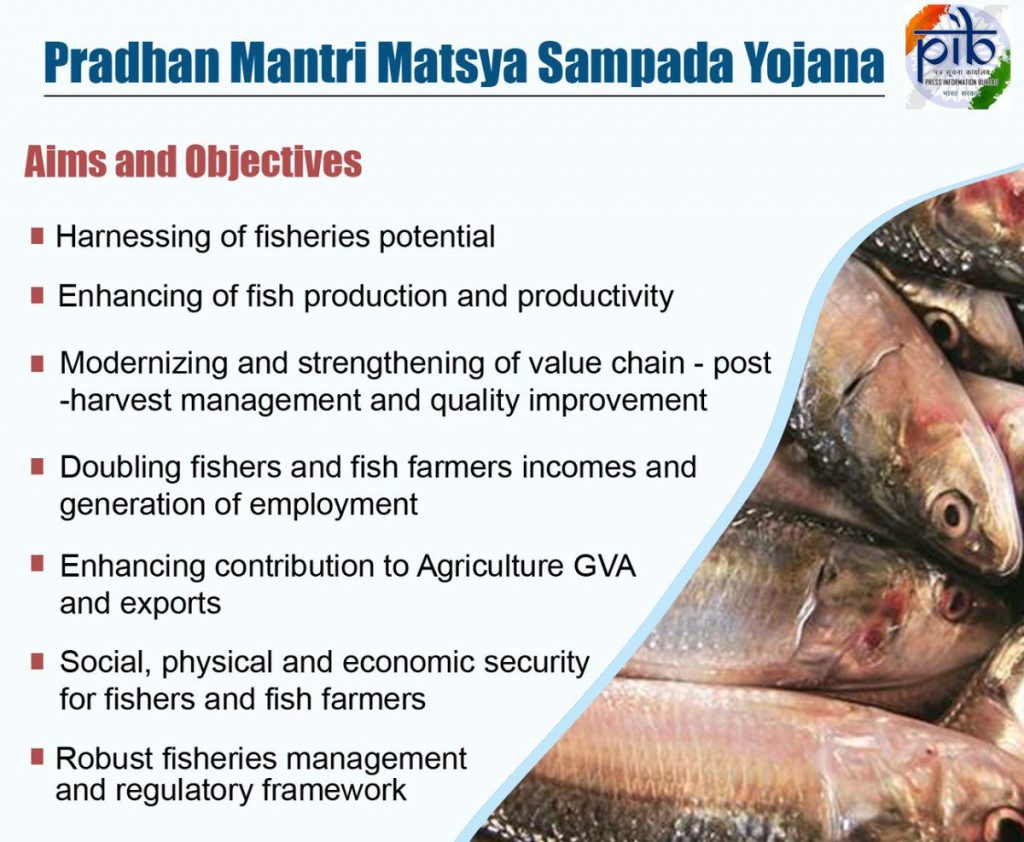
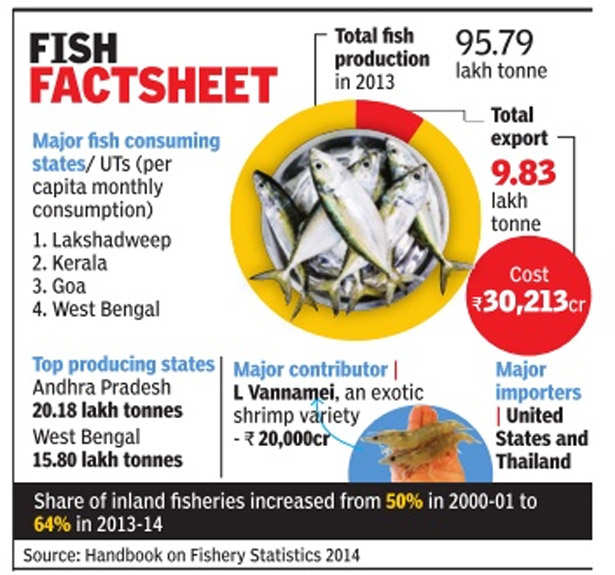
Above image of fish Facts about Indian states.
DEKHO APNA DESH WEBINAR SERIES
Focus: GS 1; Indian culture will cover the salient aspects of Art Forms, literature and Architecture from ancient to modern times.
Why in News?
Ministry of Tourism organizes webinar on “India’s Hidden Gems “under Dekho Apna Desh Webinar Series.






